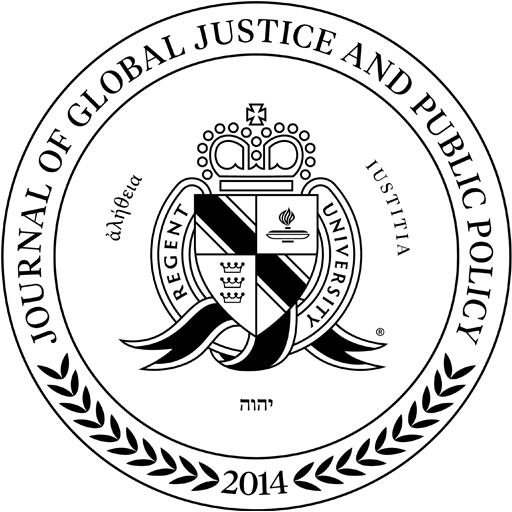BAD LAW AND BAD POLICY: WHY THE MILITARY SELECTIVE SERVICE ACT IS UNCONSTITUTIONAL IN LIGHT OF THE POLICY DECISION TO ALLOW WOMEN TO SERVE IN COMBAT ROLES IN THE MILITARY
Zachary S. Whiting* | 1 Regent J. Glob. Just. & Pub. Pol. 293 (2015)
INTRODUCTION
This Note analyzes the legal and policy considerations of the Military Selective Service Act (“MSSA”), military conscription, and the role of men and women in combat. The author begins this Note by providing a historical context, reviewing the various legislative iterations of the Selective Service System and selective implementations of the registration and conscription requirements. The author then reviews the case law interpreting the Selective Service System, with a heavy review of the seminal case Rostker v. Goldberg,[1] in which the Supreme Court of the United States upheld the constitutionality of the MSSA against a Fifth Amendment due process challenge.
The author proceeds to make several legal and policy arguments and presents possible solutions. First, the author considers the constitutionality of the MSSA in light of the Defense Department’s decision to end restrictions on women in combat roles and open up combat positions to women in all branches of the military. The author argues that in light of recent developments, Rostker v. Goldberg is no longer the controlling precedent and the MSSA is unconstitutional. Second, the author considers possible solutions to remedy these constitutional concerns. While requiring women to register with the Selective Service System may alleviate some of the constitutional infirmities of the MSSA, the author argues that this is bad policy. Ultimately, the author concludes that Congress should repeal the MSSA and eliminate the registration and conscription requirements altogether and rely on an all-volunteer force.
HISTORICAL BACKGROUND
A. Various Legislative Iterations of the Selective Service System
1. Selective Service Act of 1917
The origins of the modern registration and draft regime began with the Selective Service Act of 1917 (“the 1917 Act”), enacted on May 18, 1917.[2] Even before the United States entered World War I, Congress and the President sought to increase the size of the regular army and reserve component through the National Defense Act of 1916.[3] Frustrated that volunteer enrollment was not meeting the benchmarks set by the National Defense Act, Congress passed and President Woodrow Wilson signed the Selective Service Act of 1917.[4]
The Selective Service Act of 1917, passed a month after Congress declared war against Germany, was designed to increase the number of troops available to fight in World War I.[5] The phrase “Selective Service” “refers to the need to be selective when conscripting from the local community because of the economic hardship placed upon the Nation during a draft.”[6] The goal of the 1917 Act was to increase the regular army to full force and increase the reserve component.[7] The means of achieving this goal was a regime of systematic registration for conscription rather than voluntary enlistment.[8] The 1917 Act contained a registration provision that “made it the duty of those liable to the call to present themselves for registration on the proclamation of the President so as to subject themselves to the terms of the act and provided full federal means for carrying out the selective draft.”[9]
The 1917 Act created conscription categories into which registrants were placed, created local boards that facilitated the registration and classification process, and allowed for certain classes to be deferred or exempted from the registration and conscription requirements (e.g., ministers, divinity students, married persons with dependents, or conscientious objectors).[10] There were three registration cycles during World War I:
The first, on June 5, 1917, was for all men between the ages of 21 and 31. The second, on June 5, 1918, registered those who attained age 21 after June 5, 1917. (A supplemental registration was held on August 24, 1918, for those becoming 21 years old after June 5, 1918. This was included in the second registration.) The third registration was held on September 12, 1918, for men age 18 through 45.[11]
The constitutionality of the 1917 Act was challenged in the courts and upheld by the Supreme Court of the United States in 1918 in the Selective Draft Law Cases.[12] Approximately twenty-four million men registered for the draft[13] and more than 1.66 million men were drafted under the 1917 Act.[14] The World War I Selective Service System, originally designed to be temporary, was liquidated and eventually phased out:
After the signing of the armistice of November 11, 1918, the activities of the Selective Service System were rapidly curtailed. On March 31, 1919, all local, district, and medical advisory boards were closed, and on May 21, 1919, the last state headquarters closed operations. The Provost Marshal General was relieved from duty on July 15, 1919, thereby finally terminating the activities of the Selective Service System of World War I.[15]
2. Selective Training and Service Act of 1940
Another looming world war led to the adoption of the first peacetime registration and conscription regime in American history.[16] The Selective Training and Service Act of 1940 (“the 1940 Act”) was enacted on September 16, 1940.[17] Similar to the 1917 Act, the 1940 Act initially “authorized the President to ‘create and establish a Selective Service System . . . and [to] establish within the Selective Service System civilian local boards . . . .’”[18] The World War II regime employed a lottery system to draft soldiers.[19] When the United States entered into World War II, the 1940 Act was amended to require men between the ages of eighteen and sixty-five to register, and made men between the ages of eighteen and forty-five eligible for conscription.[20] By the end of World War II, more than ten million men had been drafted under the 1940 Act.[21]
The 1940 Act also contained a number of deferments and exemptions from the registration and conscription requirement for those in certain occupations, married with dependents, ministers and divinity students, and conscientious objectors.[22] The constitutionality of the 1940 Act was challenged in the courts on a number of grounds—namely, lack of Congressional authority, the nondelegation doctrine, and religious freedoms—but the lower federal courts consistently upheld the 1940 Act.[23]
Like the 1917 Act, the 1940 Act was intended to be temporary; the Act was allowed to expire, and the System was liquidated:[24]
The Selective Service System created by the 1940 Act was terminated by the Act of March 31, 1947, which established an Office of Selective Service records “to liquidate the Selective Service System, which liquidation shall be completed as rapidly as possible after March 31, 1947, but in any event not later than March 31, 1948 . . . .”[25]
3. The Current System: The Military Selective Service Act
The beginning of the Cold War and concerns about the rise and spread of communism led to a renewed call for a registration and conscription regime.[26] The result was the creation of the current Selective Service regime, which has gone through several name changes and substantive amendments since it was adopted in 1948 as the Selective Service Act of 1948.[27] The 1940 Act had expired and the previous regime had been liquidated by the time the 1948 Act was enacted.[28] The court in Groupp noted, “although patterned after the organization created in 1940, the Selective Service System established in 1948 was a new and separate system. It has remain[ed] in existence, albeit with amendments, extensions, and changes of name, since 1948.”[29]
- 453 U.S. 57, 78–79 (1981). ↩︎
- See Selective Draft Act, ch. 15, 40 Stat. 76 (1917) (codified as amended at 50 U.S.C. § 451 et seq. (2012)). ↩︎
- National Defense Act of 1916, ch. 134, 39 Stat. 166 (1916) (codified as amended in scattered sections of 10 & 32 U.S.C.). ↩︎
- See Selective Draft Law Cases, 245 U.S. 366, 375–76, 380–81 (1918); see, e.g., Jeremey K. Kessler, The Administrative Origins of Modern Civil Liberties Law, 114 COLUM. L. REV . 1083, 1102 (2014). ↩︎
- Selective Draft, 245 U.S. at 375. ↩︎
- SELECTIVE SERV. SYS., SELECTIVE SERVICE SYSTEM: AMERICA’S INSURANCE POLICY 10, available at http://www.sss.gov/PDFs/Educational%20Materials/Primer.pdf. ↩︎
- See Selective Draft, 245 U.S. at 375–76. ↩︎
- See id. ↩︎
- Id. at 376. ↩︎
- See id; see also Anne Yoder, Military Classifications for Draftees, SWARTHMORE C. PEACE COLLECTION, http://www.swarthmore.edu/library/peace/conscientiousobjection/MilitaryClassifications.htm (last visited Dec. 15, 2013). ↩︎
- World War I Selective Service System Draft Registration Cards, M1509, NAT’L ARCHIVES, http://www.archives.gov/research/military/ww1/draft-registration/index.html (last visited Feb. 22, 2015). ↩︎
- Selective Draft, 245 U.S. at 381. ↩︎
- NATIONAL ARCHIVES, supra note 11, at 1. ↩︎
- SELECTIVE SERV. SYS., supra note 6, at 11. ↩︎
- NATIONAL ARCHIVES, supra note 11, at 2. ↩︎
- See Selective Service Records, NAT’L ARCHIVES, http://www.archives.gov/st-louis/archival-programs/other-records/selective-service.html (last visited Dec. 15, 2013). ↩︎
- Selective Training and Service (Burke-Wadsworth) Act of 1940, ch. 720, 54 Stat. 885 (repealed 1973). ↩︎
- United States v. Groupp, 459 F.2d 178, 180 (1st Cir. 1972). ↩︎
- See Take a Closer Look at the Draft, NAT’L WWII MUSEUM, http://www.nationalww2museum.org/learn/education/for-students/ww2-history/take-a-closer-look/draft-registration-documents.html (last visited Dec. 15, 2013). ↩︎
- See Selective Training and Service Act §§ 2–3; cf. Yoder, supra note 10 (noting the age range became eighteen to sixty-five during World War II, whereas the Selective Training and Service Act originally set the range as twenty-one to thirty-six). ↩︎
- SELECTIVE SERV. SYS., supra note 6, at 11. ↩︎
- See Yoder, supra note 10. ↩︎
- See, e.g., United States v. Lambert, 123 F.2d 395, 396 (3d Cir. 1941); United States v. Herling, 120 F.2d 236, 236 (2d Cir. 1941); United States v. Newman, 44 F. Supp. 817, 822 (E.D. Ill. 1942); United States v. Garst, 39 F. Supp. 367, 367 (E.D. Pa. 1941); Stone v. Christensen, 36 F. Supp. 739, 743 (D. Or. 1940); United States v. Cornell, 36 F. Supp. 81, 83 (D. Idaho 1940) (all rejecting challenges that Congress lacked authority to require registration and conscription during peacetime). See also Seele v. United States, 133 F.2d 1015, 1019-20 (8th Cir. 1943) (rejecting challenge based on nondelegation doctrine); Rase v. United States, 129 F.2d 204, 210 (6th Cir. 1942) (rejecting challenge based on religious freedom). ↩︎
- SELECTIVE SERV. SYS., supra note 6, at 10. ↩︎
- United States v. Groupp, 459 F.2d 178, 180 (1972). ↩︎
- See SELECTIVE SERV. SYS., supra note 6, at 10. ↩︎
- Military Selective Service Act, 50 U.S.C. app. §§ 451–471(a) (1948); Groupp, 459 F.2d at 180 n.6 (“In 1951, the name was changed to the ‘Universal Military Training and Service Act.’ Pub. L. 82-51, § 1, 65 Stat. 75, June 19, 1951. The name was changed in 1967 to the ‘Military Selective Service Act of 1967.’ Pub. L. 90-40, § 1, 81 Stat. 100, June 30, 1967. In 1971, the name became the ‘Military Selective Service Act.’ Pub. L. 92-129, § 101(a), 85 Stat. 348, September 28, 1971.”). ↩︎
- Id. at 180. ↩︎
- Id. ↩︎
* Zachary graduated from the Regent University School of Law in 2014. He graduated summa cum laude and Phi Beta Kappa from Stetson University in 2010 with a B.A. in Political Science. Zachary thanks Matthew Poorman for his editorial guidance, and Professor David Wagner for his service as faculty advisor during the writing of this Note.

